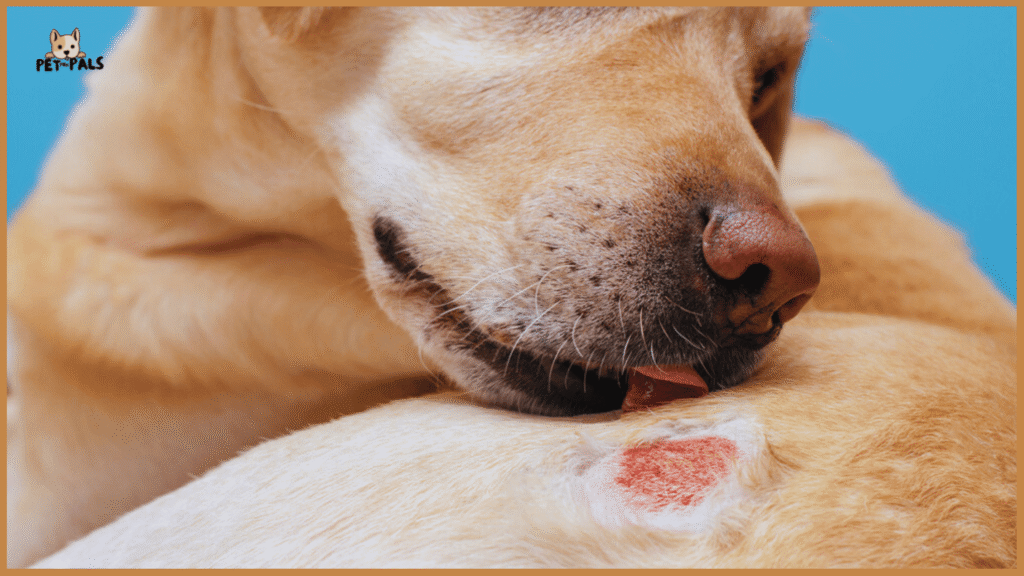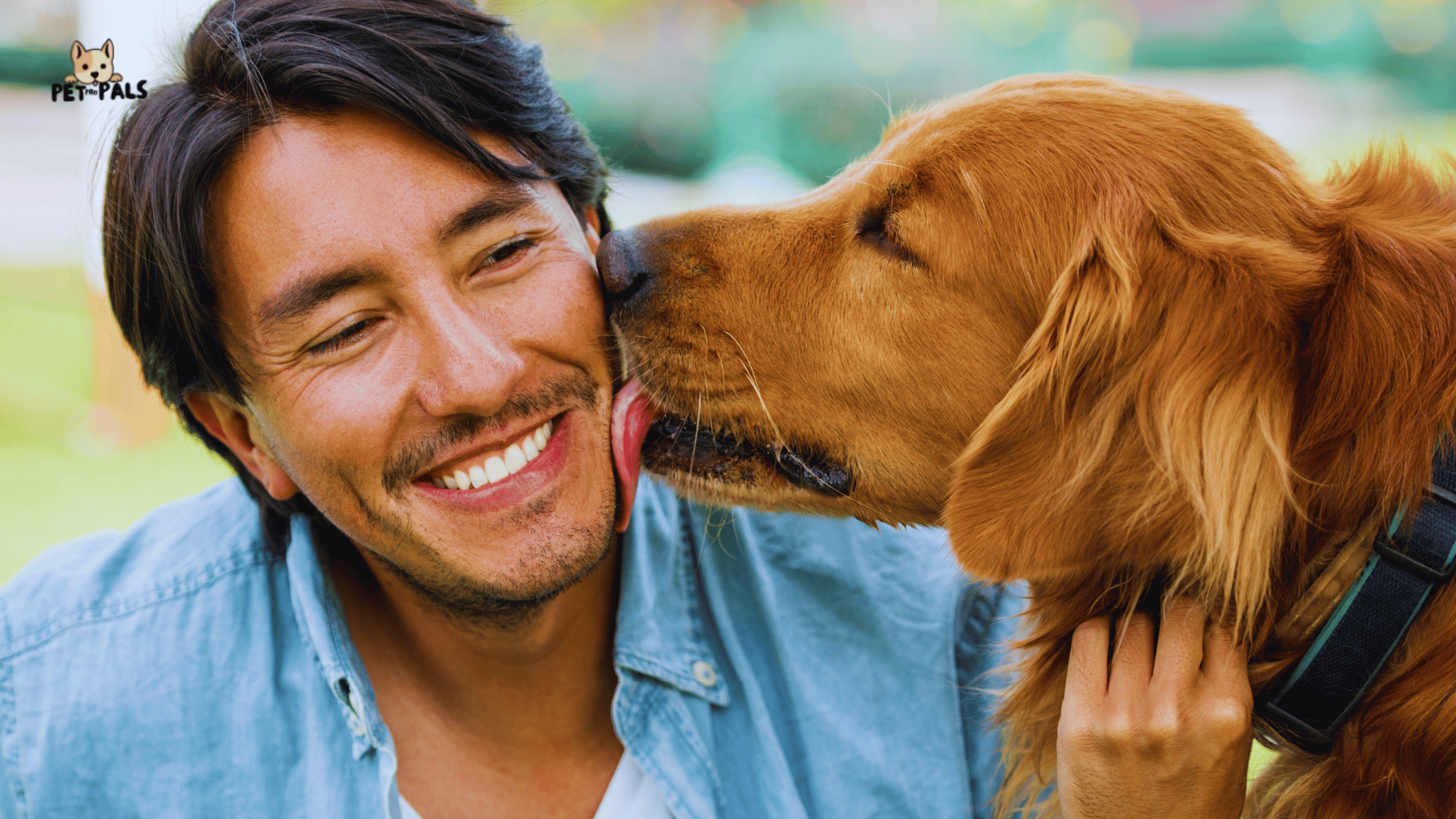Most pet owners miss the early signs of ringworm until it spreads, and by then, it’s harder to treat. Catching it early is key for quicker recovery and preventing it from affecting other pets or family members.
Ringworm is a contagious fungal infection (not caused by worms, despite the name). It can be passed through direct contact with infected animals, humans, or even contaminated surfaces.
Recognizing what does ringworm look like on a dog is important for catching it early. In the beginning, it might appear as small, circular patches of hair loss or scaly skin. If untreated, it can spread to more areas, causing more discomfort for your dog.
The sooner you spot the signs, the easier it is to treat. Keep reading to learn about the symptoms and what to do if you think your dog might have ringworm.
What Is Ringworm in Dogs?
Ringworm in dogs is caused by dermatophytes, a type of fungus that thrives on the outer layer of the skin, hair, and nails. Despite its name, it’s not caused by worms at all. The infection can appear as circular patches of hair loss, often accompanied by scaly, irritated skin.
This fungal infection spreads easily through direct contact with an infected animal or contaminated surfaces. It can also be transmitted through infected bedding, grooming tools, or even furniture.
Puppies, senior dogs, and dogs living in shelters are more prone to ringworm because their immune systems may be weaker or more susceptible. If you’ve recently adopted a dog or brought a new pet into the home, it’s important to monitor for signs of ringworm to prevent spreading it further.
What Does Ringworm Look Like on a Dog?

When wondering what does ringworm look like on a dog, the first sign to look for is circular hairless lesions. These spots are often round or coin-shaped, with a clear patch of bald skin in the center. Around the edges, you’ll notice red or scaly skin, sometimes with a crusty texture.
The infected area may appear rough or flaky, and the skin might look irritated or inflamed. These patches often start small but can grow larger as the fungus spreads.
Ringworm commonly shows up on certain areas of your dog’s body, including the face, ears, paws, tail, and belly. While these are the most common spots, it can appear anywhere on your dog’s body. If you see any unusual bald patches or skin changes, it’s important to act quickly before the infection spreads further.
Ringworm Symptoms Based on Dog Coat Type
The appearance of ringworm symptoms can vary depending on your dog’s coat type. Here’s how it typically shows up based on the coat:
- Short-haired dogs:
The lesions are easier to spot since their coats are thinner, making the circular hairless patches and scaly edges more visible. - Long-haired dogs:
Symptoms may be hidden until the infection is more advanced. The hair can cover up the affected areas, making it harder to notice early signs like bald spots or irritation. - Puppies:
Ringworm tends to show more aggressively in puppies. Their immune systems are still developing, so the fungus may spread faster and cause more severe symptoms.
It’s important to regularly check your dog’s skin for any unusual changes, especially if they have longer fur or are still a puppy.
What Does Healing Ringworm Look Like on a Dog?
As your dog begins to heal from ringworm, you’ll notice several signs that the infection is improving:
- Color fading and flaking are decreasing:
The red, irritated skin starts to fade, and the flaking or crusting of the skin becomes less noticeable. The affected area will begin to look cleaner and less inflamed. - Patch begins regrowing hair:
New hair will start to grow in the bald patches, and you’ll see a soft fuzz or stubble in the area. This is a clear sign that the infection is on its way out. - Skin turns pale or greyish but healthy:
The skin in the affected area may turn a pale or greyish color, but it should still look healthy—not inflamed or sore.
Even if the symptoms seem to fade and your dog appears to be healing, it’s important to finish the full course of treatment to ensure the infection is completely gone and to prevent a relapse.
Ringworm vs Other Skin Conditions in Dogs
It can be tricky to tell the difference between ringworm and other common skin conditions in dogs. While they may share some symptoms, there are key differences to watch for. Here’s a quick comparison with mange, hot spots, and allergies:
| Condition | Appearance | Symptoms |
|---|---|---|
| Ringworm | Round, coin-shaped bald patches | Not always itchy; scaly edges, hair loss |
| Mange | Red, irritated areas with hair loss | Intense itching, crusty lesions |
| Allergies | Symmetrical rashes, often on belly | Usually seasonal, mild itching, inflamed skin |
Ringworm: Often appears as circular, hairless spots with scaly or crusty edges. While it can be itchy, it isn’t always.
Mange: A highly itchy condition caused by mites, often resulting in crusty lesions and inflamed skin.
Allergies: Typically cause symmetrical rashes, most common on the belly or feet, and are often seasonal with mild itching.
Knowing these differences can help you identify whether it’s ringworm or another skin issue that needs treatment.
When Should You See a Vet?

If you suspect your dog has ringworm, certain red flags mean it’s time to visit the vet:
- Multiple lesions: If the infection is spreading or there are several areas with bald spots.
- No improvement in 10 days: If your dog’s condition isn’t getting better or seems to worsen despite treatment.
- Spreading to humans or other pets: Ringworm is highly contagious, so if you notice the infection spreading to other pets or family members, it’s crucial to seek professional help.
When you visit the vet, they may use these common diagnostic methods:
- Wood’s lamp: A special blacklight used to detect fungal infections, though it doesn’t work for all cases.
- Skin scraping or fungal culture: A sample of the infected skin or hair is collected and tested to confirm ringworm.
Prompt treatment is key, so don’t hesitate to consult a vet if you see these warning signs.
Can Humans Get Ringworm from Dogs?
Yes, ringworm is zoonotic, meaning it can be transmitted from dogs to humans. It’s most common in children or individuals with weakened immune systems, as they are more vulnerable to infections.
To prevent transmission, here are some important tips:
- Wash hands: Always wash your hands thoroughly after touching your dog, especially if you’ve been handling an infected area.
- Disinfect bedding, toys, and brushes: Regularly clean anything your dog uses, including bedding, toys, and grooming tools, to avoid spreading the fungus to other pets or family members.
Taking these precautions, you can help reduce the risk of the infection spreading from your dog to yourself or others in your household.
Expert Insight: What Vets See Most Often
Veterinarians often see ringworm cases in environments where dogs are in close contact, like shelters, doggy daycares, or multi-pet households. It’s not always about poor hygiene. Even healthy, well-groomed dogs can pick it up from a contaminated brush or shared bedding. That’s why vets stress the importance of isolating infected pets and completing the full treatment, even if symptoms improve early.
Common Myths About Ringworm in Dogs
Let’s clear up a few common misunderstandings that often delay treatment:
- Myth: Only dirty dogs get ringworm.
Truth: Any dog can get it, even clean ones. It’s a fungus, not dirt-related. - Myth: It’s not serious.
Truth: Left untreated, it can spread to other pets and even to humans. - Myth: If it stops itching, it’s cured.
Truth: The symptoms may fade before the fungus is completely gone. Always finish treatment.
Quick Ringworm Symptoms Checklist
Here’s a fast way to identify early signs of ringworm in your dog:
- Round, bald patches of missing fur
- Red or scaly edges around lesions
- Crusty or flaky skin in affected areas
- Commonly appears on face, paws, tail, belly, or ears
- Not always itchy, especially early on
Final Tips for Spotting and Preventing Ringworm in Dogs
Preventing and spotting ringworm early can save you a lot of trouble. Here are some final tips to help keep your dog safe from this contagious infection:
Frequent brushing helps you check for any unusual skin changes, like hair loss or scaly patches, before they spread. Regularly wash your dog’s bedding and food bowls to remove any fungal spores that might be lurking.
Always use separate grooming tools for each pet to prevent the transfer of fungi. If you have multiple pets, keep the infected one away from others to prevent the spread of ringworm.
FAQs About Ringworm in Dogs
How long does ringworm take to heal in dogs?
Ringworm usually takes around 2–4 weeks to heal with proper treatment. However, in more severe cases or if treatment isn’t consistent, it can take longer to fully clear up.
Can ringworm go away without treatment?
It’s rare. While very mild cases might resolve on their own, ringworm can persist or even spread if left untreated, especially in puppies, senior dogs, or those with weak immune systems.
What happens if you don’t treat ringworm in dogs?
If ringworm is not treated, it can easily spread to other pets and even to people. It may cause more serious skin damage over time and can linger for several months, making it much harder to manage later.
How do I clean my house after a ringworm infection?
To prevent reinfection, thoroughly clean and disinfect your dog’s bedding, toys, bowls, and any surfaces they’ve touched. Use pet-safe antifungal cleaners and vacuum carpets and upholstery regularly to remove spores.
Is ringworm painful for dogs?
Ringworm isn’t typically painful, but it can cause discomfort. Some dogs may experience itching, irritation, or sensitivity around the infected areas, especially if the skin becomes inflamed or infected.
Can a vaccinated dog get ringworm?
Yes, because there’s currently no vaccine for ringworm in dogs. Even healthy, well-cared-for dogs can get infected through contact with contaminated surfaces, other animals, or environments like dog parks or shelters.

